Passover Traditions:
Honoring the Old and Embracing the New
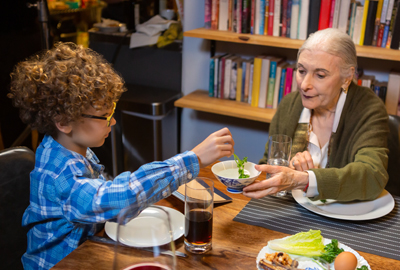
Passover is a holiday rich in tradition, with customs passed down through generations and new interpretations emerging to reflect contemporary values. While families across the world celebrate the holiday in unique ways, there are common threads that connect Jewish communities to one another. Some traditions are shaped by cultural heritage, such as Ashkenazi and Sephardic customs, while others have been introduced in modern times to reflect issues of inclusion and justice.
Gabrielle Burger, director of Jewish educational engagement at The Jewish Connection Network, explores the differences between Ashkenazi and Sephardic traditions, and Brenda Footer, Baltimore connector senior associate at The Network, highlights meaningful additions to the Seder plate that bring new significance to the holiday.
Sephardic and Ashkenazi Traditions
By Gabrielle Burger
Traditionally for Ashkenazi families, there are certain foods called legumes, or kitnyot in Hebrew, (peas, corn, beans, rice, etc.) that are not eaten during Passover, whereas Sephardic families have the custom of eating them. This is a big difference, since this custom of eating or not eating kitnyot makes it difficult to eat at other homes depending on your custom.
It also means that the foods that are prepared will be very different. My Sephardic family makes stuffed cabbage every Passover, but we make it including rice. My husband’s Ashkenazi family would never eat this with rice.
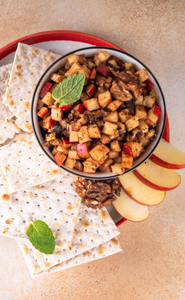
One of the more debated foods in our home is the charoset. This is a very traditional Passover food on every table, since it is part of the actual seder plate and is used during the recitation of the Passover story.
Charoset is meant to symbolize the mortar used between the stones while building the pyramids. My Sephardic family recipe uses dates as the base, which makes a very sticky, dark brown spread meant to really look like mortar. My husband’s Ashkenazi family uses apples instead as the base. As a compromise, I make the charoset using my recipe, and we serve gefilte fish with mayonnaise and horseradish with the meal, which was not a food I grew up eating.
Modern Traditions for Your Passover Seder
By Brenda Footer
Traditionally, the seder plate contains an egg to symbolize spring and rebirth, a bone to represent the Passover burnt offering, a green vegetable also reminding us of spring and charoset, a mixture of fruit and nuts that reminds us of the mortar we made when we were slaves in Egypt. Many people have expanded their seders to incorporate themes of freedom, responsibility and collective action in today’s world.
Cashews for the Troops
Rabbi Wesley Gardenswartz of Temple Emanuel in Newton, MA, started the tradition of adding cashews to the seder plate to honor military troops. The idea came from a sign at a drug store that asked customers to consider buying bags of cashews to send to troops stationed in Iraq. An employee whose son was serving abroad explained that the salted cashews provided sustenance and hydration in Iraq’s desert climate, compelling the rabbi to add them to his congregation’s seder plate.
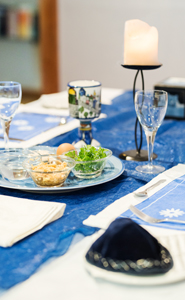
Miriam’s Cup
In parallel to Elijah’s Cup of wine, many people now add Miriam’s Cup of water. Miriam is recognized as a prophet, like Moses and Elijah. It is said that a well of fresh water followed Miriam as the Jews wandered through the desert after leaving Egypt. There is no prescribed prayer for blessing Miriam’s Cup. Ritualwell offers several options, or you can create your own!
An Orange for LGBTQ+ visibility
There are some stories that the orange represents women in the rabbinate, but Professor Susannah Heschel, from The Jewish Daily Forward in 2013, explained that her idea to include the orange is to represent all who feel marginalized, especially LGBTQ+ Jewish people. Many add an orange to their seder plate as a symbol of the evolving traditions that reflect the many voices within the Jewish community.
“The orange is such a part of my seder that instead of asking why it is there, my nieces ask, ‘Why did you forget to put it out?!’”
Fair Trade Chocolate or Cocoa Beans for Labor Issues
The fair-trade movement promotes economic partnerships based on equality, justice and sustainable environmental practices. Fair Trade certified chocolate and cocoa beans are grown under standards that prohibit the use of forced labor.
They can be included on the seder plate to remind us that although we escaped from slavery in Egypt, forced labor is still very much an issue today.
Acorn for Indigenous Land
Some congregations, inspired by Kehilla Community Synagogue in Piedmont, CA, have started adding an acorn to the seder plate as a way to acknowledge the Indigenous peoples who have lived on the land for generations. The acorn, a staple food for many Native American tribes in California, serves as a reminder of history, connection to the land and the importance of ongoing learning and engagement.
Honoring the Past and Embracing the Future
Passover is a time to honor ancient traditions while also finding ways to make the holiday relevant to today’s world. Whether through the longstanding differences between Ashkenazi and Sephardic customs or the more recent additions to the Seder plate, each tradition enriches the celebration and deepens our connection to Jewish history and values. However you celebrate, may your Passover be meaningful and steeped in tradition—old and new.
Subscribe to our newsletter
The Associated is a home for everyone in the Baltimore Jewish community. We offer several email lists to help people find a community, engage with their peers and support Jewish journeys around the world.
Join Our Mailing ListAdd Impact to Your Inbox
Sign up for our newsletter
Subscribe to our newsletter
The Associated is a home for everyone in the Baltimore Jewish community. We offer several email lists to help people find a community, engage with their peers and support Jewish journeys around the world.
Join Our Mailing List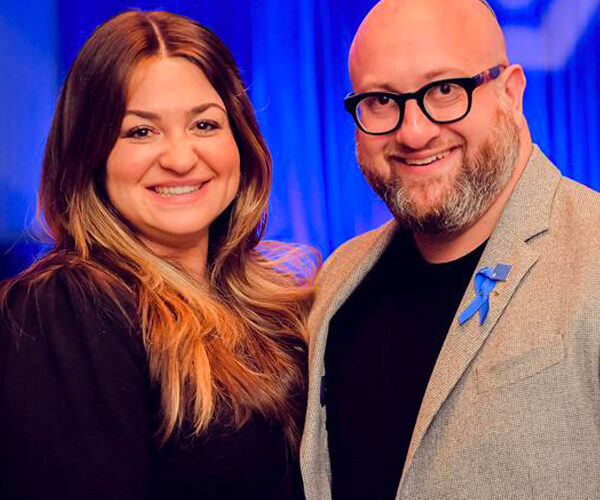




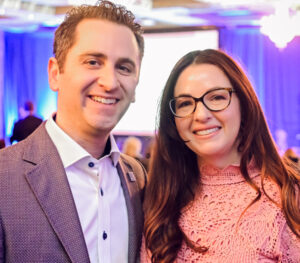

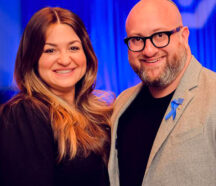


 Please Wait while we loading your video.
Please Wait while we loading your video.